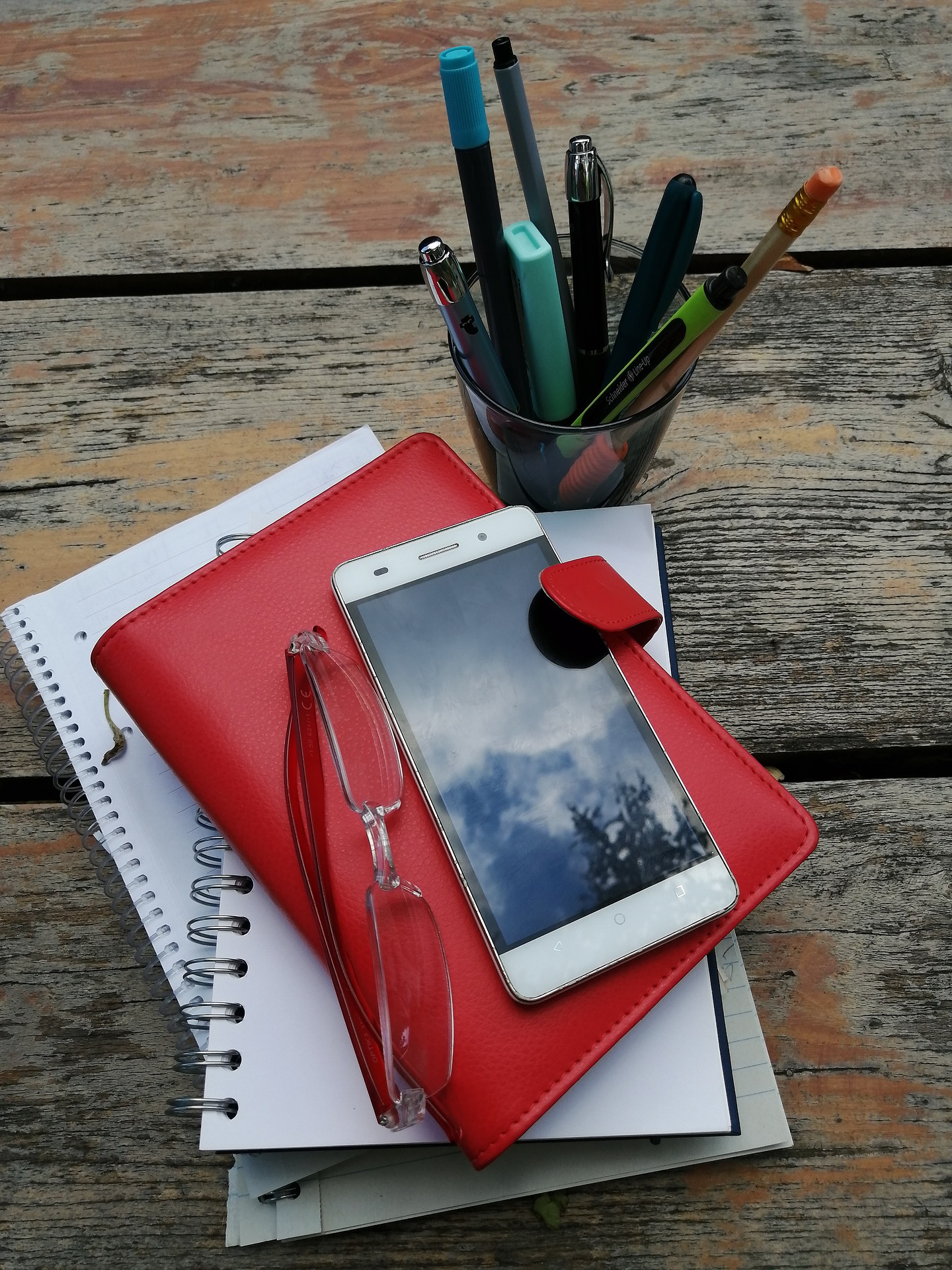Reflexive verbs: Uso y forma
La rutina diaria de Sara en Buenos Aires y Texas
As Sara visits Amy, she is recording her experience in her diary. She’s been in town for three days. Read the diary entry of her third day and pay attention to the comparisons she makes between her life in Argentina and Texas. ¿Son sus rutinas similares en Argentina y en Texas?
While you are reading, pay attention to the verbs in bold. What do you notice about them? What verb do they remind you of? What do you think they refer to? You can use the table in section I below to understand the meaning of the verbs.
15 de febrero La estoy pasando muy bien (I’m having a good time) con mi primita Amy. Ella es genial. Mi rutina diaria es diferente aquí. En Buenos Aires (BA): Yo me levanto a las 6:00 de la mañana. Luego me ducho. ¡Uso el baño temprano porque mi mamá se ducha y está en el baño por una hora! (Tenemos un solo baño en casa.) Luego me peino el pelo y me cepillo los dientes. También me maquillo para no parecer una zombie en la uni. Luego me pongo la ropa y salgo para mis clases. En Tejas, mi rutina es diferente: Con las chicas, todas las mañanas nos levantamos a las 8:00. ¡Dos horas más tarde! Amy siempre se levanta saltando (jumping) de la cama. Ella corre al baño a cepillarse los dientes y a peinarse el pelo. No tiene tiempo para ducharse ni tampoco para maquillarse porque siempre llega tarde a sus clases. LOL. Yo me relajo y hablo con mi mamá o amigos por FaceTime. Luego tomo un café y leo las noticias en mi teléfono. Claro, estoy de vacaciones…
Now let’s talk about this excerpt. What do you notice about the verbs in bold? What is similar to and different from other verbs we have learned before?
¿Comprendiste? Responde las preguntas a continuación sobre el diario de Sara.
- Las rutinas diarias de Sara, ¿son similares o diferentes en Argentina y Texas? ¿Por qué?
- ¿Cómo son diferentes? ¿Qué rutinas diarias tiene Sara en BA, pero no en Tejas y vice versa?
- ¿Cómo se siente Sara en Tejas?
Now let’s talk a bit more about the verbs in Sarah’s diary entry. As you saw, they are different from other verbs we have seen. They’re more like gustar, but they’re also different from gustar. These verbs are called reflexive verbs.
A reflexive verb is a verb that is accompanied by a reflexive pronoun. This verb construction is used when a person performs an action to or for him/herself. In other words, the subject of the verb and the direct object of the verb are the same person. It is important to note that reflexive verbs can sometimes be unintuitive for English speakers because they are not very common in English; yet, they are used quite a bit in Spanish. So it is important to learn not just how to form reflexive verbs, but also when to use them.
You have already seen the reflexive verb llamarse when you learned to introduce yourself in Spanish in Módulo introductorio of Volume 1. Another typical use of reflexive verbs is personal care, as seen in these examples from Sara’s diary.
Adapted from “Reflexive Verbs” by COERLL, licensed under CC BY-SA NC. Used with authors’ permission.
Luego me peino el pelo y me cepillo los dientes. También me maquillo para no parecer una zombie en la uni.
These verbs are commonly used to describe rutinas diarias, like the ones included in Sara’s diary. Have a look at the following table.
![]() I. Los verbos reflexivos de acción
I. Los verbos reflexivos de acción
| afeitarse | to shave |
| arreglarse | to get ready (to go somewhere) |
| bañarse | to take a bath |
| cepillarse (el pelo, los dientes) | to brush (one’s hair, one’s teeth) |
| ducharse | to take a shower |
| irse a la cama | to go to bed |
| lavarse (la cara, los dientes) | to wash (one’s face, one’s teeth) |
| levantarse | to get up |
| maquillarse | to put on makeup |
| peinarse (el pelo) | to comb one’s hair |
| pintarse (las uñas) | to paint one’s nails |
| ponerse la ropa | to put on one’s clothes; to get dressed |
| relajarse | to relax |
| sacarse/quitarse la ropa | to take off one’s clothes; to undress |
| secarse (el pelo) | to dry oneself; to dry one’s hair |
II. Los pronombres reflexivos
When conjugating a reflexive verb, we need to use a reflexive pronoun as part of the verb phrase. We will see how this works in the following section. But first, let’s have a look at the pronouns. What do you notice about them? Have a look at the verb endings too. What do you notice?
| Levantarse | |
| (yo) me levanto | I get up |
| (tú) te levantas | you (inf.) get up |
| (vos) te levantás | you (inf.) get up (Argentina, Uruguay) |
| (él/ella/Ud.) se levanta | he/she gets up; you (fml.) get up |
| (nosotros) nos levantamos | we get up |
| (vosotros) os levantáis | you (inf., plural, Spain) get up |
| (ellos/as, Uds.) se levantan | they get up; you (plural) get up |
III. La conjugación de los verbos reflexivos
Conjugating reflexive verbs is a three-step process. Let’s see…
1. Breaking down the verb: It is important to understand that reflexive verbs can be broken into three sections for their conjugation. As you learned in Volume 1 (verbs ending in -ar and verbs ending in -er and -ir), all verbs have a stem and an ending. Besides these two elements, reflexive verbs in the infinitive also have the -se ending to indicate they are reflexive. Let’s have a look at the verb we just saw levantarse:
| levant | ar | se |
| (stem) | (ending) | (reflexive part) |
2. Reflexive pronouns: In order to conjugate the verb, the first thing we need to do is to drop the se. Now we have the verb levantar. However, we need to indicate that 1) it is a reflexive verb and 2) who is doing the action. These two needs can be answered by a reflexive pronoun. So we need to choose a pronoun out of the ones we presented in section II, and our choice will, of course, be determined by who is doing the action. Let’s see…
(yo) me + levanto
Amy se + levanta
Las chicas y yo nos + levantamos
![]() Your turn now! Con un@ compañer@, conjugate these two reflexive verbs: ducharse, irse. Use the table below.
Your turn now! Con un@ compañer@, conjugate these two reflexive verbs: ducharse, irse. Use the table below.
| Reflexive pronouns | ducharse | irse | |
| (yo) | |||
| (tú) | |||
| (vos) | |||
| (él/ella/Ud.) | |||
| (nosotros) | |||
| (vosotros) | |||
| (ellos/as, Uds.) |
IV. ¿Dónde están los pronombres reflexivos?
We place reflexive pronouns before the conjugated verb:
Amy siempre se levanta saltando (jumping) de la cama.
When the sentence is negative, you place the reflexive pronoun after the particle no and before the conjugated verb:
Amy no se levanta a las 6:00 de la mañana.
Now that you have learned what a reflexive verb is and how it is conjugated and used, we recommend that you watch the following video, which summarizes the information presented in this section.
![]() Spanish Reflexive Verbs
Spanish Reflexive Verbs
Copyrighted Citation: “Spanish Reflexive Verbs” by Ciber Profe, Copyrighted. With author’s permission for use in Trayectos.
![]() V. ¿Cuándo? Los hábitos: Frecuencias
V. ¿Cuándo? Los hábitos: Frecuencias
Now that you are an expert on reflexive verbs, let’s learn some expressions that you can use to talk about how often you do something; that is, to talk about your routine. Here are some useful frequency expressions.
| a menudo | often |
| a veces | sometimes |
| casi nunca | almost never/hardly ever |
| casi siempre | almost always |
| con bastante frecuencia | quite often |
| de vez en cuando | occasionally |
| generalmente | usually |
| los fines de semana | during the weekend |
| nunca | never |
| siempre | always |
| todos los días | everyday |
| una vez a la semana | once a week |
| una vez al mes | once a month |
Now it’s time to use our new vocabulary and structures: Actividad 1-10. Los verbos y las actividades. Visita la página en https://bit.ly/AcHabTrayectos y completa la actividad 3. Be ready to discuss your results with other classmates. ¿Tienes unas frases nuevas? Add the new phrases you have learned to your glossary for this module. Paso 1. Ahora vamos a escuchar a Juan. Él habla de su rutina en la universidad. Escucha la descripción del horario de Juan y chequea si tú y él tienen rutinas en común. Paso 2. Escucha la descripción otra vez y llena el siguiente horario de Juan con sus actividades diarias. Actividad 1-12. Tus rutinas diarias. Paso 1. Ahora describe en detalle tus actividades durante tus días de clase. Escucha el audio de Juan y chequea la sección del horario de Carolina para repasar la hora. Escribe al menos 120 palabras. Paso 2. Ahora vamos a llenar el siguiente horario con tus rutinas, like we did it with Juan’s routine. Escribe la hora y la rutina diaria en cada espacio. Agrega más filas (rows) si es necesario. ¡Ahora ya tenemos la información para el resto de las actividades! Actividad 1-13. La rutina diaria de Adrián. Paso 1. Completa el siguiente texto usando la información en la imagen. ¡OJO! You need to conjugate all the verbs you use according to the meaning of the text. Have a look at the language this person uses in the picture and in his narrative, ¿de dónde es? “Hola, Soy Adrián. Todos los días, (1) ________________ a las siete y cuarto. Luego, (2) ________________ un poco de yoga. Después (3) ________________ tranquilamente y desayuno. Antes de ir a trabajar, mi perro y yo (4) ________________ un rato. Al llegar al trabajo, (5) ________________ 4 horas seguidas y a la 13:00, mi compañero de oficina y yo (6) ________________ en la cafetería. A las 16:00, termina mi trabajo y regreso a casa. En casa, (7) ________________ un poco mirando la televisión. A las 17:15, (8) ________________ un poco la casa. Me gusta tener la casa siempre limpia. A las 18:30, (9) ________________ a clases de inglés y al terminar, veo a mis amigos. Normalmente, nosotros (10) ________________ algo por ahí: una bebida y unas tapas. A las 20:45, (11) ________________ directo al supermercado a hacer un poco de compra. Suelo cenar a las 21:15. Después (12) ________________ la basura. Finalmente (13) ________________ o me conecto a la internet un ratito y sobre las 23:30, (14) ________________ a la cama.” Paso 2. ¿Qué te dice el texto sobre la rutina de ese país? ¿Qué es importante para Adrián? ¿Cómo es Adrián? Usa el contenido del texto para responder estas preguntas. Activity modified from original in https://www.profedeele.es/actividad/vocabulario/acciones-habituales/. Attribution: By Daniel Hernández Ruiz, licensed under CC BY 4.0. Ahora escuchemos los audios de Yahaira y Lucía en la actividad 6 en https://www.profedeele.es/actividad/vocabulario/acciones-habituales/ y continuemos con las interpretaciones de las rutinas diarias. Escucha los dos audios y responde si las siguientes oraciones son Ciertas (C) o Falsas (F). Yahaira Lucía Activity on https://www.profedeele.es/actividad/vocabulario/acciones-habituales/. Attribution: By Daniel Hernández Ruiz, licensed under CC BY 4.0. Actividad 1-15. ¿Con qué frecuencia? Paso 1. Los porcentajes te indican la frecuencia con que haces algo. Escribe la expresión de frecuencia en el recuadro (box) adecuado, siguiendo el ejemplo. Usa el vocabulario de hábitos para responder las preguntas. a veces casi nunca casi siempre con bastante frecuencia de vez en cuando generalmente los fines de semana nunca siempre todos los días una vez a la semana una vez al mes Paso 2: Ahora vamos a tus rutinas diarias en la Actividad 1-12. Fill in the table below, but this time, with your activities. ¡OJO! La frecuencia de las actividades diarias no está relacionada con la hora. a veces casi nunca casi siempre con bastante frecuencia de vez en cuando generalmente los fines de semana nunca siempre todos los días una vez a la semana una vez al mes Paso 3. Usando tus respuestas en el Paso 2, crea preguntas usando “¿Con qué frecuencia…?” y tus rutinas diarias. Amy no se levanta a las 6:00 de la mañana. Ahora tú: casi nunca con bastante frecuencia de vez en cuando los fines de semana nunca una vez a la semana una vez al mes Modified from: “¿Con qué frecuencia?” by Antonio Luna, is licensed under CC BY 4.0. With a classmate, prepare a conversation. You will need to use the reflexive verbs and the vocabulary you learned in Hablemos más. Include the following information. Estudiante 1. You are getting to know your best friend’s classmate, whom you’ve just met. You talk about each other’s daily routines as the semester begins. Estudiante 2. Your classmate is introducing you to their best friend. You talk about each other’s daily routines as the semester begins.![]() ¡Manos a la obra!
¡Manos a la obra!
![]() Actividad 1-11. La rutina diaria de Juan
Actividad 1-11. La rutina diaria de Juan
Hora:
Rutina diaria:
9:00 A.M.
10:00 A.M.
11:00 A.M.
6:00 P.M.
8:00 P.M.
12:00 A.M.
Horario:
Rutina diaria

![]() Actividad 1-14. La rutina diaria de Yahaira y Lucía.
Actividad 1-14. La rutina diaria de Yahaira y Lucía.
1. Yahaira se levanta a las 7:30.
C
F
2. Yahaira termina de trabajar a las 2:00 de la tarde.
C
F
3. Yahaira siempre da un paseo después de comer.
C
F
4. Yahaira cena sola.
C
F
5. Yahaira mira la televisión antes de irse a la cama.
C
F
1. Lucía va a bailar zumba todos los días.
C
F
2. Lucía se levanta más tarde el sábado.
C
F
3. El sábado va a hacer ejercicio.
C
F
4. El sábado por la noche va a bailar salsa.
C
F
5. Los domingos trabaja casi todo el día
C
F
100%
Siempre
a menudo
90%
70%
50%
15%
10%
0%
100%
Modelo: Yo siempre me lavo los dientes por las mañanas.
a menudo
a menudo
![]() Conversemos. Las rutinas.
Conversemos. Las rutinas.
Click on the following button to continue using your new structures and vocabulary.
Now it’s time to use our new vocabulary and structures and learn more culture! Let’s move to


